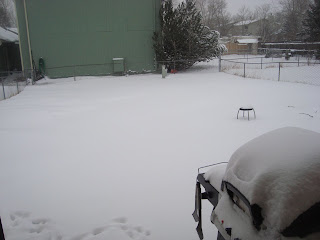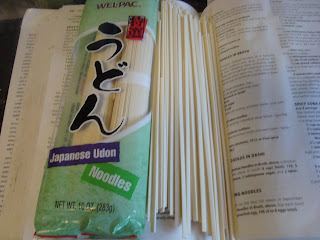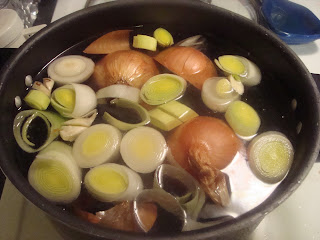I burned out, years ago, on pulled pork. One summer, my father roasted THREE (yes, three) whole hogs in one month. Hundreds of pounds of pork. There were TONS of leftovers. My stepmother, brothers, and I ate so much pulled pork that month (whereas dad got to escape for two meals a day to work). I think there were weeks where we ate pulled pork for all three meals a day. My stepmother finally threw the rest away. And I have never been able to look at pulled pork again. That was about 15 years ago. I decided it was time to try my hand at pulled pork again.
The first step was to make the Southern barbecue dry rub (p. 587). The recipe requires a quarter cup of cracked black peppercorns. I didn't know how to do this in a way that wouldn't make a huge mess. It finally occurred to me to put the peppercorn in a plastic bag:

And then smash them with a meat tenderizer:

Totally worked! The rub also included brown sugar, paprika, chili powder, red pepper, cumin, mace, and salt. Very very easy.

The dry rub was then rubbed into a pork shoulder roast:

The dry rub recipe makes a LOT of spice.
I decided to use my awesome Le Creuset dutch oven. The pork went into the oven at a low temperature for around three hours.

At this point the pork shredded easily. Look at the blade bone:

It pulled cleanly out. This pulled pork was among the easiest things that I have made out of TJOC. The recipe made a LOT of pulled pork. A simple, cheap, easy recipe that makes a LOT of meat--I really recommend it.

What is pulled pork without barbecue sauce? I decided to make several types so that we wouldn't get bored with the pulled pork. I made TJOC's simple barbecue sauce. I also made the Western North Carolina barbecue sauce (p. 587) (which I thought was a very specific name). It was easy--I mixed white vinegar, cider vinegar, hot peppers sauce, sugar, crushed red pepper flacks, and a little catsup and it was done! I heated the bbq sauce a little but the recipe doesn't require it.

Finally, I made Ray's mustard barbecue sauce (p. 586). I don't typically like mustard so I wasn't very excited about this recipe. Again, it was easy. I mixed yellow mustard, catsup, cider vinegar, vegetable oil, onion, honey, garlic, a little lime, Worcestershire sauce, and some black pepper.

I made a LOT of barbecue sauce. Three containers! Yum.

So how was it all? Tasty! The pulled pork was tender and flavorful and the sauces were awesome! The vinegar sauce was amazing and the mustard sauce was incredibly good too. When you think of barbecue sauce what do you think of? I think of the sauce on the far right but do you think of something else?
I do realize that I wrote this entry almost two months late. I've been insanely busy with my comprehensive preliminary exams for my PhD (I PASSED!!) so I was incredibly behind on TJOTJOC--and I took about a month off from cooking. I promise to have it caught up to date within a day or two and I'm already back to cooking :)







































